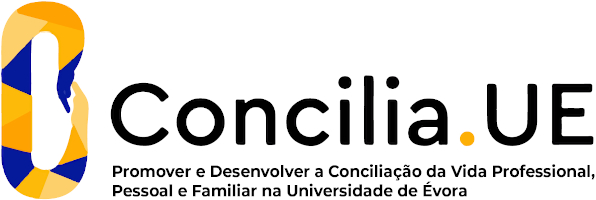2025
Advanced Methods in Biochemistry
Name: Advanced Methods in Biochemistry
Code: QUI13574M
6 ECTS
Duration: 15 weeks/156 hours
Scientific Area:
Biochemistry
Teaching languages: Portuguese
Languages of tutoring support: Portuguese, English
Regime de Frequência: Presencial
Sustainable Development Goals
Learning Goals
Know the fundamentals of immunochemical methods and their main applications; Know the fundamentals of laboratory techniques for biomolecule purification; Know the instruments used in equipment that allow analytical determinations and the purification of biomolecules; Select analytical and biomolecule purification techniques according to well-defined criteria. Know the fundamentals of modern chromatographic techniques and their importance and application in the area of biochemistry. Know and understand the concepts and foundations on which is based the study of biochemical systems by electrochemical methods; Know and apply, judiciously, the electrochemical resources which allow the correct analysis of species with biochemical interest and the development / electrochemical characterization of biochemical systems.
Contents
Immunochemical methods - concepts and applications: Antibodies and antigens; Antibody production; Detection and quantification of biomolecules by antibody-based techniques; Diagnostic applications; therapeutic applications of monoclonal antibodies.
Chromatographic Methods - Basic concepts and applications of chromatographic methods in the area of Biochemistry (Review); Hyphenated chromatographic analytical techniques; Use of chromatographic methods for the detection of compounds with biochemical interest.
Electrochemical methods - relevance in the context of contemporary biochemistry; Fundamental concepts, material, instrumentation and essential equipment; Techniques of species analysis with biochemical interest and development / electrochemical characterization of biochemical systems; Applications: electrochemical biosensors, biofuel cells, electrosynthesis and electroremediation, and electrical monitoring techniques of cell culture media.
Chromatographic Methods - Basic concepts and applications of chromatographic methods in the area of Biochemistry (Review); Hyphenated chromatographic analytical techniques; Use of chromatographic methods for the detection of compounds with biochemical interest.
Electrochemical methods - relevance in the context of contemporary biochemistry; Fundamental concepts, material, instrumentation and essential equipment; Techniques of species analysis with biochemical interest and development / electrochemical characterization of biochemical systems; Applications: electrochemical biosensors, biofuel cells, electrosynthesis and electroremediation, and electrical monitoring techniques of cell culture media.
Teaching Methods
The teaching/learning will be based on students' autonomous work (not excluding collaborative work in the learning of specific content), using the content taught, available or recommended teaching resources, and the guidance provided by instructors. Student work will occur both during time and outside of class. Whether due to the variety of defined program contents or the plurality of teachers involved in the course unit, work with and for students will naturally involve the promotion of different learning strategies and will include the carrying out of activities of a diverse nature, such as: discussion on the relevance and usefulness of the content taught in the field of Biochemistry; proposing and solving questions/problems; presentation and use of available analytical tools and their theoretical and practical particularities; carrying out experimental activities, or exemplifying case studies on the topics being learned; carrying out, presenting and orally discussing a mini-project/work; carrying out research and bibliographic consultation activities, and respective reflection and understanding on the subjects covered, among other activities. To promote active and critical participation of students, teaching and scientific resources, in physical or digital format (e.g., scientific articles, web pages, software, images, animations, videos, items used in experimental activities, etc.) that stimulate student interest, and interactive and dialectical teaching methods will be used. During the teaching of contents, whenever possible, a connection will be established with practical and real-life problems/cases. Theoretical content will be introduced in theoretical classes (T) and consolidated through laboratory practical classes (PL), after which a report may be requested for evaluation. In most PL classes, students will be exposed to original research papers conducted by the professors themselves, as well as advanced modern equipment and techniques. Moodle will be used as the primary resource for organizing and delivering learning materials to students, as well as for communicating with them, not excluding, of course, face-to-face contact and contact via institutional email.
Assessment
The assessment of acquired knowledge and developed competences will be based on a Continuous Assessment system (CA) or a Final Assessment system (FA). The first Regime considers the grades obtained in three Assessment tests, NFn, carried out throughout the semester, in which the learning in each module is assessed, together with the grade of an oral presentation requested in the immunochemical methods module, NTAO1, and with the grade of a Poster presentation requested in the chromatographic methods module, NTAP3. The second Regime considers the grade obtained in the final written exam, NFE, carried out in the regular, appeal, special or extraordinary period, and the grade obtained in the aforementioned assignments, NTAO1 and NTAP3.
With three Assessment tests held throughout the semester, the goal is to ensure a more evenly distributed assessment of acquired knowledge and developed skills, while also being less intense and exhaustive. Each Assessment test will assess a specific set of course contents, which are defined and detailed in the Curricular Unit syllabus, which is made available to students in the first class. Both the Assessment tests and the final written exam include an assessment of the content taught in the practical laboratory classes. Still in relation to the assessment of knowledge and development of skills that are advocated through PL classes, in the particular case of a student missing all PL classes of a module, the teacher will request, in addition to the written Exam of the Appeal Period (or later), the completion of a Practical Laboratory Exam on the content of these classes, which is worth 1/3 of the total grade.
The final grade in the continuous assessment system (NFCA) must be ? 9.5 values and is calculated through:
NCA = F1 (23.8%) + F2 (33.0%) + F3 (19.8%) + NTAO1 (10.2%) + NTAP3 (13.2%), in which F1, F2 and F3 represents, respectively, the classification obtained in the Assessment tests of immunochemical, electrochemical and chromatographic methods module.
The final grade in the final assessment system (NFFA) must be ? 9.5 values and is calculated through: NFFA = 76.6% NFE + NTAO1 (10.2%) + NTAP3 (13.2%), remaining in NFE for each module, the weights considered in the continuous assessment.
With three Assessment tests held throughout the semester, the goal is to ensure a more evenly distributed assessment of acquired knowledge and developed skills, while also being less intense and exhaustive. Each Assessment test will assess a specific set of course contents, which are defined and detailed in the Curricular Unit syllabus, which is made available to students in the first class. Both the Assessment tests and the final written exam include an assessment of the content taught in the practical laboratory classes. Still in relation to the assessment of knowledge and development of skills that are advocated through PL classes, in the particular case of a student missing all PL classes of a module, the teacher will request, in addition to the written Exam of the Appeal Period (or later), the completion of a Practical Laboratory Exam on the content of these classes, which is worth 1/3 of the total grade.
The final grade in the continuous assessment system (NFCA) must be ? 9.5 values and is calculated through:
NCA = F1 (23.8%) + F2 (33.0%) + F3 (19.8%) + NTAO1 (10.2%) + NTAP3 (13.2%), in which F1, F2 and F3 represents, respectively, the classification obtained in the Assessment tests of immunochemical, electrochemical and chromatographic methods module.
The final grade in the final assessment system (NFFA) must be ? 9.5 values and is calculated through: NFFA = 76.6% NFE + NTAO1 (10.2%) + NTAP3 (13.2%), remaining in NFE for each module, the weights considered in the continuous assessment.





















